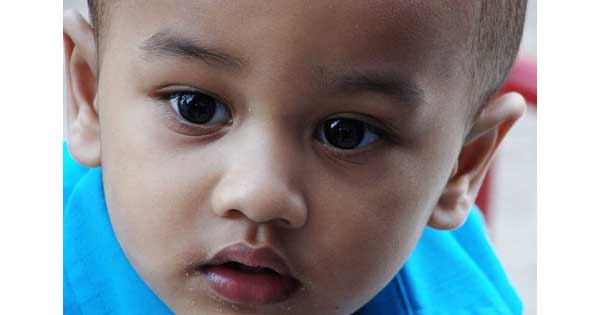
If you have a tendency, in your more sentimental moments, to think of babies as somehow oblivious to our physical traits, squash it. Babies are naïve, not blind. By just a few months old, they’ve picked up on telltale characteristics, preferring to look longer at faces of a race or gender most familiar to them. Before their first birthday, babies even seem capable of using these characteristics to bunch people into tentative, unspoken clusters.
Still, observing the trappings of race and gender is a far cry from explicitly recognizing race and gender as social categories—ones that, despite occasionally heroic parental efforts, attract stereotypes at a breakneck pace. Asian-American girls, for instance, perform better on math tests when their race is highlighted than when their gender is—even as kindergartners. By about the same age, white children shown a picture of a black woman and a white women choose the white woman as a friend, and assume others share their preferences.
So how does it happen? How do we shift from noticing prominent jaws or light skin to thinking men or white people, and eventually all that those concepts entail? Are race and gender just out in the world for us to find, obvious as Easter eggs on AstroTurf? Or do we benefit when language (and thus the social obsessions it encodes) steers us in the right direction?
Recently, researchers Gil Diesendruck and Ronit Deblinger-Tangi asked these questions of two groups of Jewish Israeli toddlers, one older (about 26 months) and the other younger (about 19 months). The toddlers were shown six different pictures of a concept—cows, say—one right after another. While looking at a picture, half of the children heard a nonsense label like, “Look! A tiroli,” while the rest heard simply, “Look at this.” Finally the toddlers were faced with two additional pictures: a category match (another cow) or a mismatch (a horse): They were asked explicitly, “Which of these two is the same as the ones we saw before?”
When the categories being tested involved animals, as in the example above, the fake labels were useless. For both the older and younger toddlers, hearing a few cows labeled as tiroli did nothing to help them form a category and, later, identify another cow as a member of that category.
But crucially, not all of the categories tested involved animals. The researchers also tested children’s ability to form explicit categories based on race and gender (which have strong biological underpinnings), as well as ethnicity and “T-shirt color” (which, especially in the latter case, don’t.) This time, the younger toddlers had a far easier time forming categories when they were given labels—and interestingly, the labels were just as helpful for the biologically imposed race and gender as for the culturally constructed categories.
The data, as is often the case with children so young, aren’t perfect. Without labels, the younger toddlers were actually below chance in their attempts to categorize people. That is, they weren’t just unreliable at picking the right person: they were actually quite good at picking the wrong one. Adding the labels, then, may have not only helped them to recognize categories, but also to understand, or remember, just what it was they were supposed to be doing. Still, taken as a whole, the study provides some of the first evidence that language—if not necessary for developing explicit social categories—certainly prods the inevitable process along.
Still, do social categories need to be so explicit to matter? What of those “tentative, unspoken clusters” of humanity that even preverbal infants seem attuned to? Can these too take on social meaning? In an email, Diesendruck told me, “It depends on what you mean by ‘meaning’. If you mean ‘valence’ or ‘affect’”—that is, whether a social category is favorable or unfavorable, arousing or calming—“then I don’t think that children necessarily have to explicitly recognize a social category to have positive or negative feelings towards [it]. However, if you mean ‘beliefs’ and ‘stereotypes’, then I tend to think that explicit recognition is necessary.” And so we have words to help us pin our ideas about others into place.

